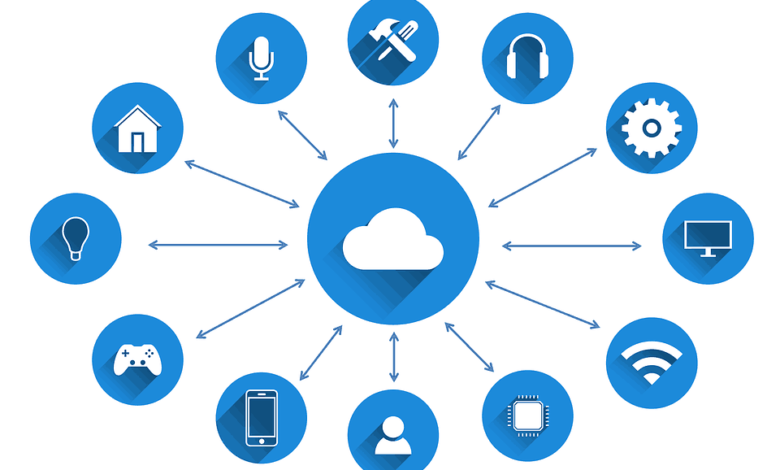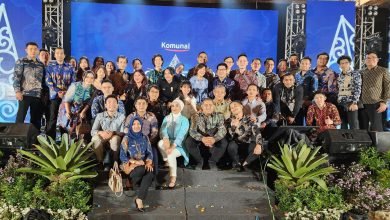The rise of the IoT

The Internet of Things better known in the technology space as IoT is a global phenomenon that is reshaping our living and our working.
IoT is a collection of interconnected smart devices, mechanical and digital machines, objects, animals or people supplied with unique identifiers (UIDs). An IoT has the ability to transmit data across a network without needing human-to-human or human-to-computer interaction.
The global IoT market size is expected grow from USD 326.90 billion in 2021 to USD 402.72 billion in 2022 at a compound annual growth rate (CAGR) of 23.2 percent.
The Internet of Things market size is expected to reach USD 926.61 billion in 2026 at a CAGR of 23.3 percent.
The application of IoT in various industries such as automotive industry is driving the growth of the IoT market. IoT offers enhanced communication, control and data delivery at any transportation point. Major companies like Mercedes-Benz, Volkswagen, Volvo, Toyota and Google Inc. are increasingly investing in developing smart cars with rich features that offer healthier, more convenient and more enjoyable driving experiences.
According to UBS, 12 percent of the total cars sold in 2030 will be for autonomous taxi fleets with 26 million driverless taxis in operation worldwide, approximately.
The Internet of Things (IoT) market consists of sales of IoT and related services that are used in building and home automation, smart energy and utilities, connected logistics, smart retail, smart mobility, and transportation.
A recent report on Mordor Intelligence highlighted that IoT technology is the keystone for various organizations to digitally transform, thus, empowering them to upgrade the existing processes by creating and tracking new business models. Enterprises and service providers have been looking at IoT as the key enabler to augment digital transformation and unlock operational efficiencies. The growing adoption of IoT technology across end-user industries, such as manufacturing, automotive, and healthcare, is driving the market’s growth positively. With the traditional manufacturing sector amid a digital transformation, IoT is fuelling the next industrial revolution of intelligent connectivity. This is changing the way industries approach increasingly complex processes of systems and machines to improve efficiency and reduce downtime.
According to Zebra’s Manufacturing Vision Study, smart asset tracking solutions based on IoT and RFID are expected to overtake traditional, spreadsheet-based methods by 2022.
The technological improvements in field devices, sensors, and robots are expected to further expand the scope of the global IoT market.
IoT technologies are overcoming the labour shortage in the manufacturing sector. According to the International Federation of Robotics, the market for collaborative robots is expected to reach a value of USD 12.3 billion by 2025. Intelligent robots work alongside workers and can be programmed by most factory workers to take on the most routine, tedious tasks and deliver with accuracy.
If you study the emerging technologies that are expected to emerge out of the existing technologies that are transforming some industries such as the manufacturing sector, you will see that it is expected to include the convergence of AI and IoT. The next wave is for IoT-based upon AI.
5G connectivity is expected to accelerate the adoption of IoT devices allowing smooth operations and flexible production. This technology is anticipated to facilitate automated assembly, automated warehouses, connected logistics, packing and product handling, and the use of autonomous carts.
The Global IoT in Banking and Financial Services Market is forecast to reach USD 12.17 Billion by 2028, according to a new report by Reports and Data.
The banking sector is figuring out ways to leverage the potential of IoT to bring out better revenues from business activities.
The data collected and analysed from sources such as mobile and web applications are used by the banks to launch better and more targeted service offerings. The data about the past service offerings are analysed to understand the needs and preferences of its customers. Customers across the banking industry are demanding personalized solutions for their varying needs. The data is needed for his present economic condition and buying behaviour. Internet of things (IoT) has made it possible for banks to keep track of all the consumer activities and present a solution specific to the needs and desires of the client.
Banks today generate and store enormous amounts of valuable information within their firewalls. The use of data improves decision making across multiple banking activities. Banks find information faster about risks and frauds. Banks also have insights into the storage and management of data to meet regulatory requirements so that data can be retained, leveraged, archived, or deleted to comply.
Verified Market Research recently published a report, “IoT in Smart Cities Market”. According to the report, the ‘IoT in Smart Cities Market’ size was valued at USD 112 Billion in 2021 and is projected to reach USD 735 Billion by 2030, growing at a CAGR of 23.04 percent from 2022 to 2030.
The report further states that globally the demand for IoT services has accumulated at a speedy rate within the past few years. The introduction of the latest technologies supported by IoT platforms and the rising integration of IoT services have boosted the demand in this market. Moreover, rising government programs for smart cities are taken into account as a key sector for the expansion of this market.
The “The Global M2M/IoT Communications Market – 7th Edition” report indicated that the global number of cellular IoT subscribers increased by 22 percent during 2021 to reach 2.1 billion. The major regional markets China, Western Europe, and North America grew similarly during the year as the world recovered from the COVID-19 pandemic. By 2026, the report now projects that there will be 4.3 billion IoT devices connected to cellular networks worldwide.
The top ten mobile operators reported a combined active base of 1.8 billion cellular IoT connections at the end of 2021, accounting for 86 percent of total connections.
In the Research Nester report published titled “AI in IoT Market: Global Demand Analysis & Opportunity Outlook 2030” indicated that Asia Pacific is projected to witness the highest market growth which can be attributed to the growing advancements in the IT & telecom sector in China and India, and rising presence of major AI and IoT companies in the region.
The Indian IoT market is poised to reach USD 15 billion, accounting for nearly 5 percent of the global market according to the recent NASSCOM report.
India is battle ready to cater to growing demand of IoT but more needs to done.




